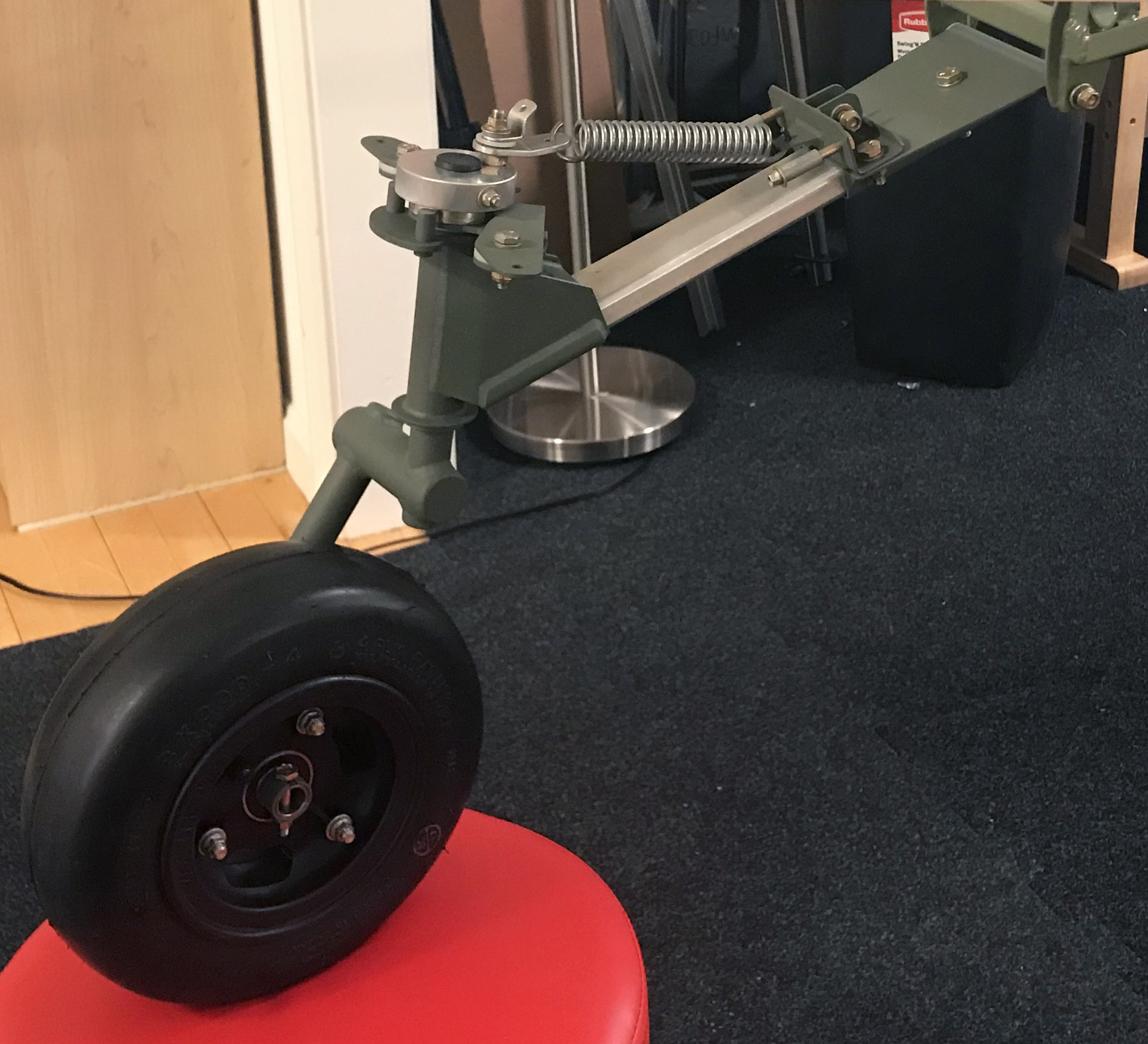Aircraft Maintenance: Taming tailwheels
Question: What is small, round, and impatient? Answer: The tailwheel.
Tailwheels have character. They aren’t satisfied to simply play their role keeping the empennage off the ground and follow along with landings and taxiing. Tailwheels demand attention. And, if ignored, they are quite happy to push themselves out in front and ruin your day. From a maintenance perspective, they have other ways of getting attention if left ignored for too long. This includes their propensity to shimmy and shake the entire aircraft until they get the attention they clamor for, or even giving up altogether, opting out and putting the aircraft on its tail feathers.
Proper tailwheel maintenance is critical to the safety of flight for conventional-gear aircraft. The most common pilot complaint is a shimmy, but a shimmy can be indicative of a variety of issues that can all lead to tailwheel failure.
When approaching routine tailwheel maintenance or trying to fix a shimmy issue, your first focus should be on component wear. Tailwheels operate in an abusive environment, and components can wear beyond their limits if not regularly inspected. The entire tailwheel assembly should be disassembled, cleaned, inspected, lubricated, and reassembled at least once per year.
Starting at the tire, inspect it for tread wear and proper inflation, then move on to the bearings. With the bearings removed and cleaned, inspect both the bearing and race for corrosion and wear. If you find any issues, replace the damaged components with new ones. Vibration from worn bearings can set up a chain reaction that will damage the rest of the components in the assembly.
Next, move on to the steering assembly. The key bolt holding this hinge together is called the King Pin, and it is critical to the security and stability of the entire assembly. It is extremely important to keep careful track of the proper order of each of the components that make up the stack of items in the swivel assembly. Each part plays a role and must be in the proper position and orientation for everything to work. Use the maintenance manual as your guide, rather than relying on the order in which you find things currently assembled. Without the manual, you may simply be repeating the mistakes of the past. Every part needs to be cleaned, inspected for wear, and replaced if necessary. Then, the entire assembly should be lubricated per the manufacturer’s instructions, torqued, and secured to the proper specs. A “calibrated elbow” has no place in this type of maintenance.
Next up, inspect the bolt that attaches the tail spring to the steering assembly. This is another common wear point, and many backcountry pilots choose to replace the tail spring bolt annually as a preventive measure against failure in the wilderness. The spring itself must be scrutinized for cracks and overall condition, then it’s on to the fuselage attachments, steering cables, and springs.

When it comes to a shimmy, tailwheel geometry is absolutely crucial. Looking sideways at the tailwheel, draw an imaginary line through the King Pin bolt toward the ground below. This line follows the angle of the bolt, as if the bolt were extended much longer. Now imagine another line drawn straight down from the center point of the tailwheel steering assembly that the King Pin bolt holds together. This line extends from the hinge point as if a plumb bob were hanging down to the earth. The angle between these two lines is called “caster.” The line projected through the King Pin bolt should be ahead of the line dropped from the steering hinge point. This is called “positive caster,” and positive caster is key to the elimination of shimmy. The tailwheel assembly angle should be checked in a variety of loading configurations to ensure that you have positive caster in all conditions. Wear and damage to the tail spring of other components can lead to negative caster, which will inevitably lead to shimmy. It’s a simple check you can make yourself and may reveal serious issues that need to be attended to. Catching an issue early can save you time and money, and may even avoid an incident in the making.
Tailwheels demand attention, but are a featured design component of some amazing aircraft (including our P–51 replica project). It puts a smile on my face when I think that tailwheel aircraft are still referred to as having “conventional gear” long after nose gear became standard on modern aircraft. It’s as if the tailwheels themselves finally conceded to the nose gears by saying: “Ok…but ONLY if we get to be called 'conventional' and you have to be called 'tricycle' like a child’s toy!”
If you would like to follow our T–51 build progress, please check out our blog at SocialFlight-T51.com. Until next time…happy flying!


